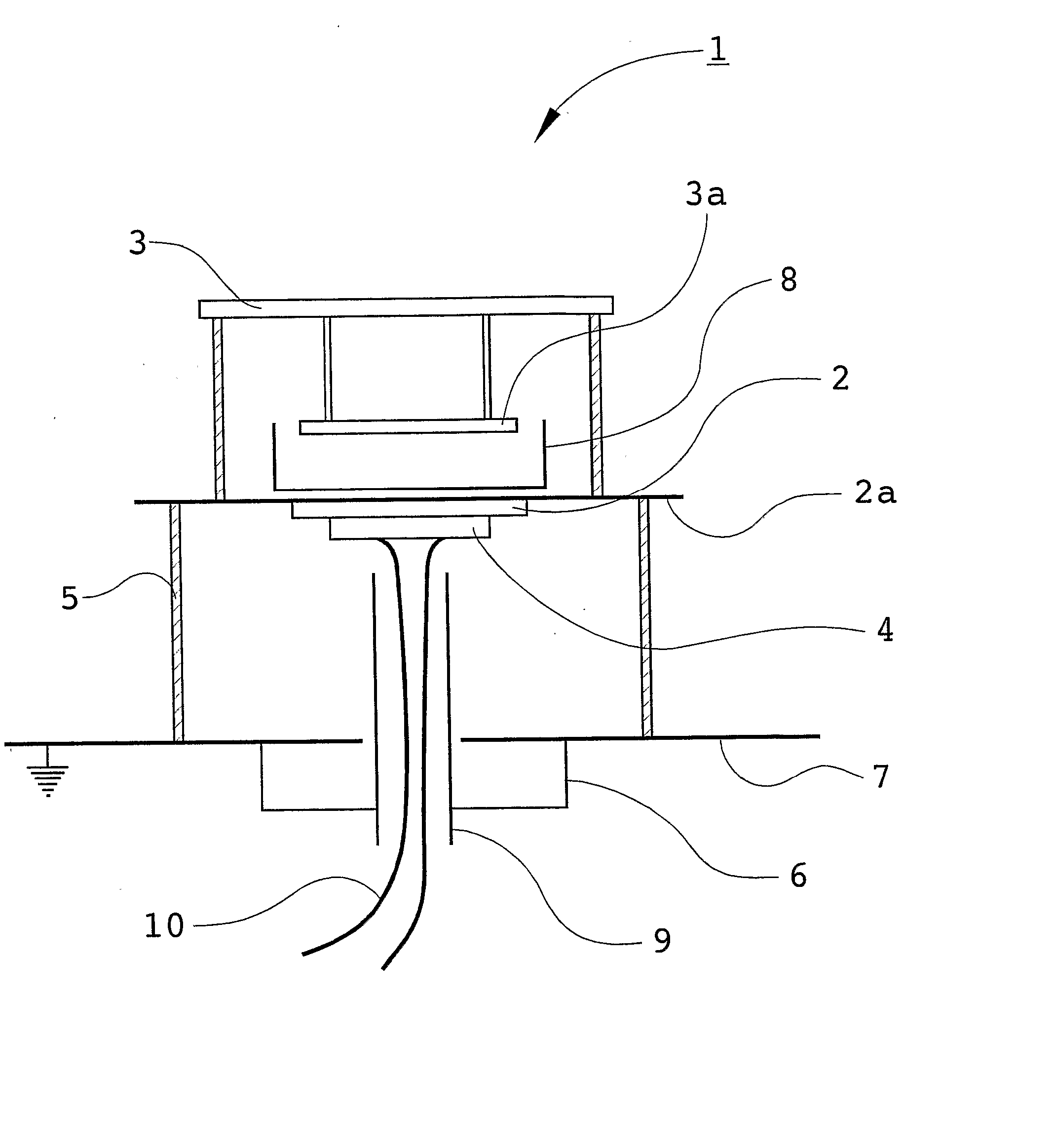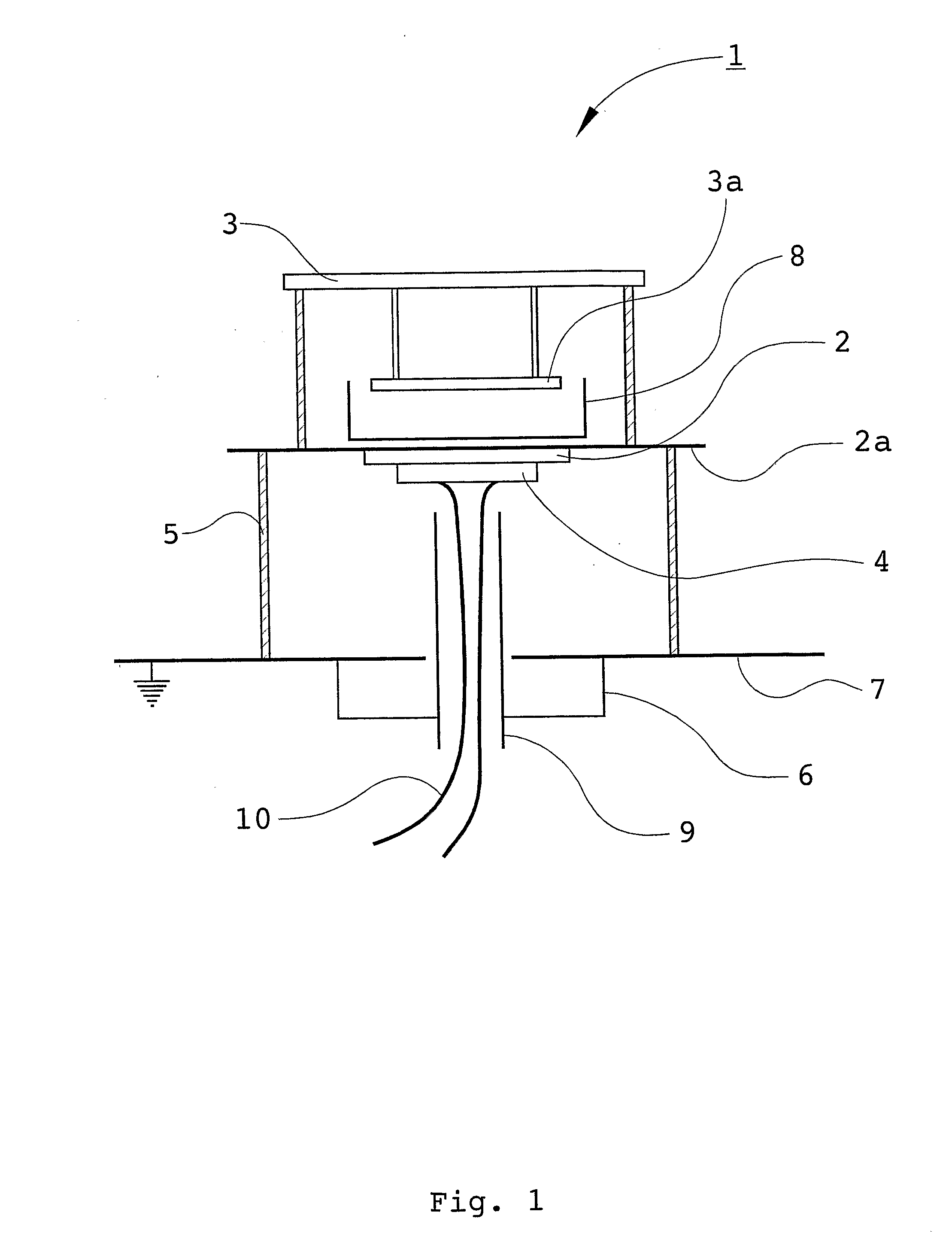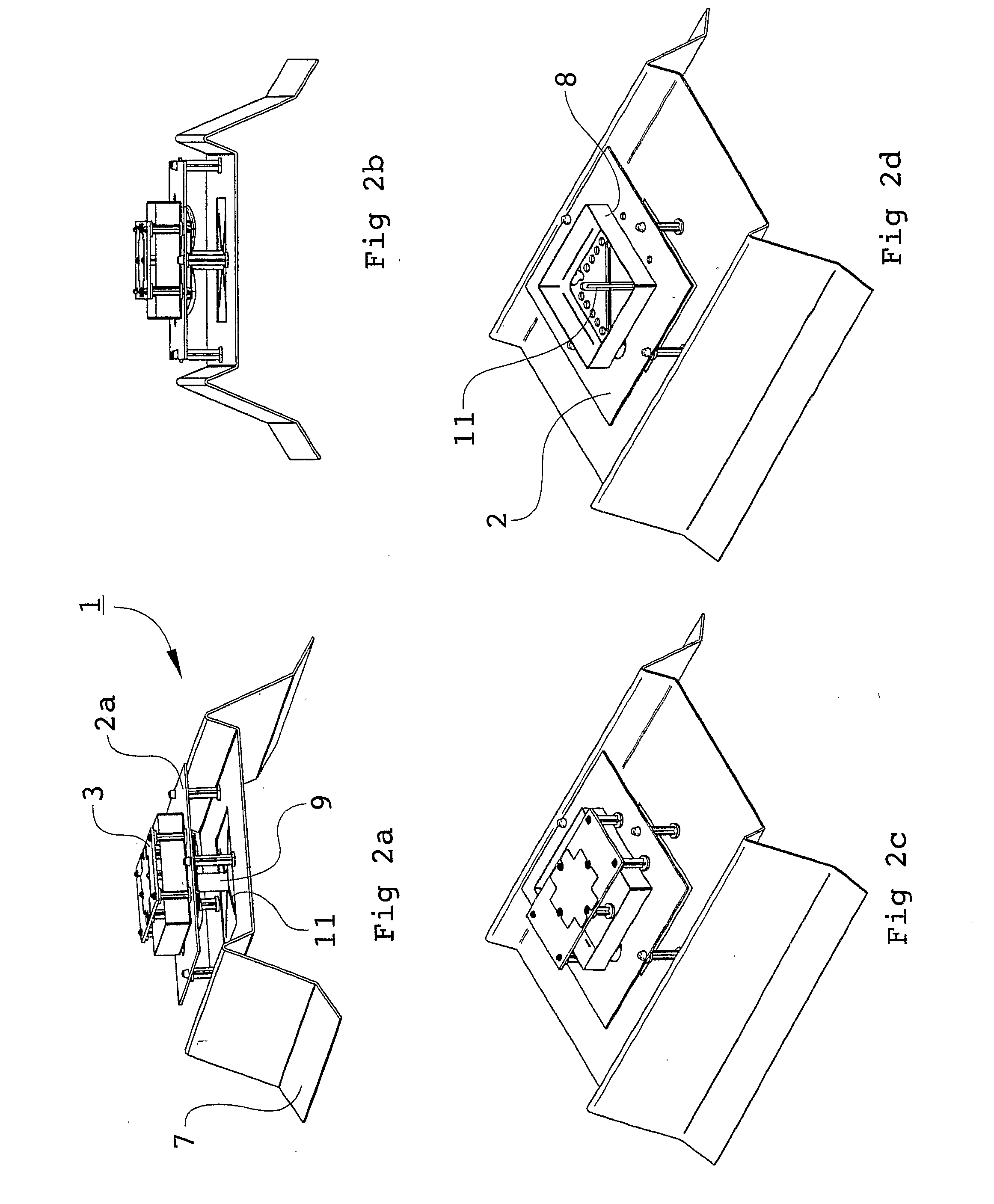Dual Band Antenna Feeding
a dual-band antenna and feeding technology, applied in the direction of polarised antenna unit combinations, resonant antennas, antenna earthings, etc., can solve the problems of difficult and time-consuming replacement, tedious and labor-intensive mounting of a bunch of cables, and the use of several different cables, so as to facilitate mounting and facilitate mounting. , the effect of eliminating laborious assembling steps
- Summary
- Abstract
- Description
- Claims
- Application Information
AI Technical Summary
Benefits of technology
Problems solved by technology
Method used
Image
Examples
Embodiment Construction
[0028] With reference first to FIG. 1, a schematic view of the dual band antenna in accordance with the present invention is shown. A dual band antenna 1 is generally indicated by reference numeral 1. A first antenna element 2 is provided, including radiating elements 2a, such as patches, made of an electrically conducting material for radiating at some frequency. The antenna element 2 is placed, for example by means of distances 5, above a primary reflector 7, whereby the reflector 7 is arranged to reflect radiation from the first antenna element 2. A shielding cage 6 is preferably also provided for preventing back radiation. A second antenna element 3, including radiating elements 3a, is placed above the first antenna element 2, and a secondary reflector 8 is provided for radiating radiation from the second antenna element 3.
[0029] The present invention is, in its most general form, based on the idea of using a shielded feeding means 9 through a first antenna element 2 to another...
PUM
 Login to View More
Login to View More Abstract
Description
Claims
Application Information
 Login to View More
Login to View More - R&D
- Intellectual Property
- Life Sciences
- Materials
- Tech Scout
- Unparalleled Data Quality
- Higher Quality Content
- 60% Fewer Hallucinations
Browse by: Latest US Patents, China's latest patents, Technical Efficacy Thesaurus, Application Domain, Technology Topic, Popular Technical Reports.
© 2025 PatSnap. All rights reserved.Legal|Privacy policy|Modern Slavery Act Transparency Statement|Sitemap|About US| Contact US: help@patsnap.com



